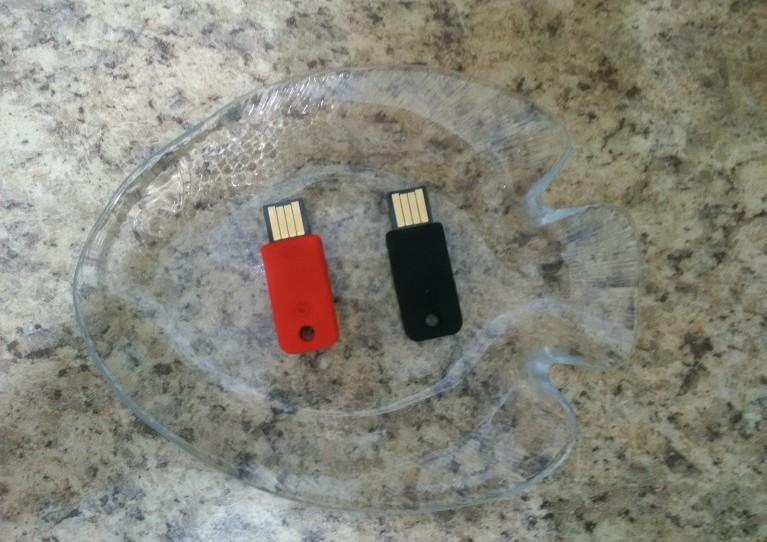Today, I will briefly recount a small adventure I had in the Linux terminal on my laptop. As I noted in a prior article, I installed the Peppermint OS Linux distribution on my laptop. Please note that I am no Linux expert or programmer, as the article suggests. This is my own account of identifying problems and looking up answers from those far wiser in these matters than I am.
Some time after installing Peppermint on my laptop, I purchased two SoloKeys to use for two-factor authentication to protect some of my important accounts. SoloKeys are FIDO two-factor authentication keys. After setting one up with a compatible account, the account will require the user to plug an attached key into the USB port of the computer he or she is using and press a button on the key itself. For good reason, this is often regarded as the most secure two-factor authentication method.

The Solokeys worked out of the box on my desktop, which runs Linux Manjaro. I was able to set them up with several accounts through my Vivaldi web browser. I naturally assumed that I would have no difficulty logging into said accounts on my laptop. Sadly, I was mistaken. When I tried to log into those accounts through Vivaldi on my laptop, neither of my keys was recognized.
Since I knew for a fact that the keys worked on my desktop and that the USB ports on my laptop work, I assumed that I was missing something necessary for using the SoloKeys on Peppermint OS. After a quick search, I came across a page on SoloKeys’ website that seemed to answer my question. The document begins by noting that “[o]n Linux, by default USB dongles can’t be accessed by users, for security reasons.” So how do we fix this? First, it listed several packages for Udev rules for different Linux distributions. I confirmed that my laptop had the libu2f-udev package installed, which is the Ubuntu version of the package.
Having confirmed that, I moved to the next step. The instructions informed me that if I still needed to set up a rule, a simple method is to run the following three commands from the Linux terminal:
git clone https://github.com/solokeys/solo.git
cd solo/udev
make setup I tried the commands, but found that I was stymied at the first line, being informed that the “git” command was not recognized. I knew that I had used a similar method to install something on my desktop, so I ran another web search. The search bore fruit, and I ran two commands – one to update my packages and a second to install git:
sudo apt update
sudo apt install gitThis install was successful. Having seemingly installed git, I returned to the three commands on the Solokeys Udev guide and tried them again. This time, all three commands appeared to run successfully.
The moment of truth came when I tried to log into my administrator account for The New Leaf Journal, which now requires a security key. After pressing the button, I was brought to the admin panel. With that, I can happily report that my mission was accomplished.
Although I am very far from a Linux terminal expert, it is good to know that there are so many well-written resources out there to rectify different issues that may arise. Much like with installing Peppermint OS itself, I was able to identify a problem I was having and locate clear information to fix it. With this issue now settled, I can rely on my SoloKeys to secure accounts on at least two out of my three computers without any concerns – I have not yet tested them on my old desktop, which runs Linux Lite.
Although this may be an unusual article topic for me, this is the article for the day because I spent the time I would have been finding an article topic trying to set up my SoloKeys on my laptop.
As for the SoloKeys themselves, I am impressed with how they work thus far, and in due course, I will write a more comprehensive review of them. The same goes for the Peppermint OS operating system. For now, however, I will enjoy being able to securely log into The New Leaf Journal and other important accounts with nothing but a password, USB stick, and button.